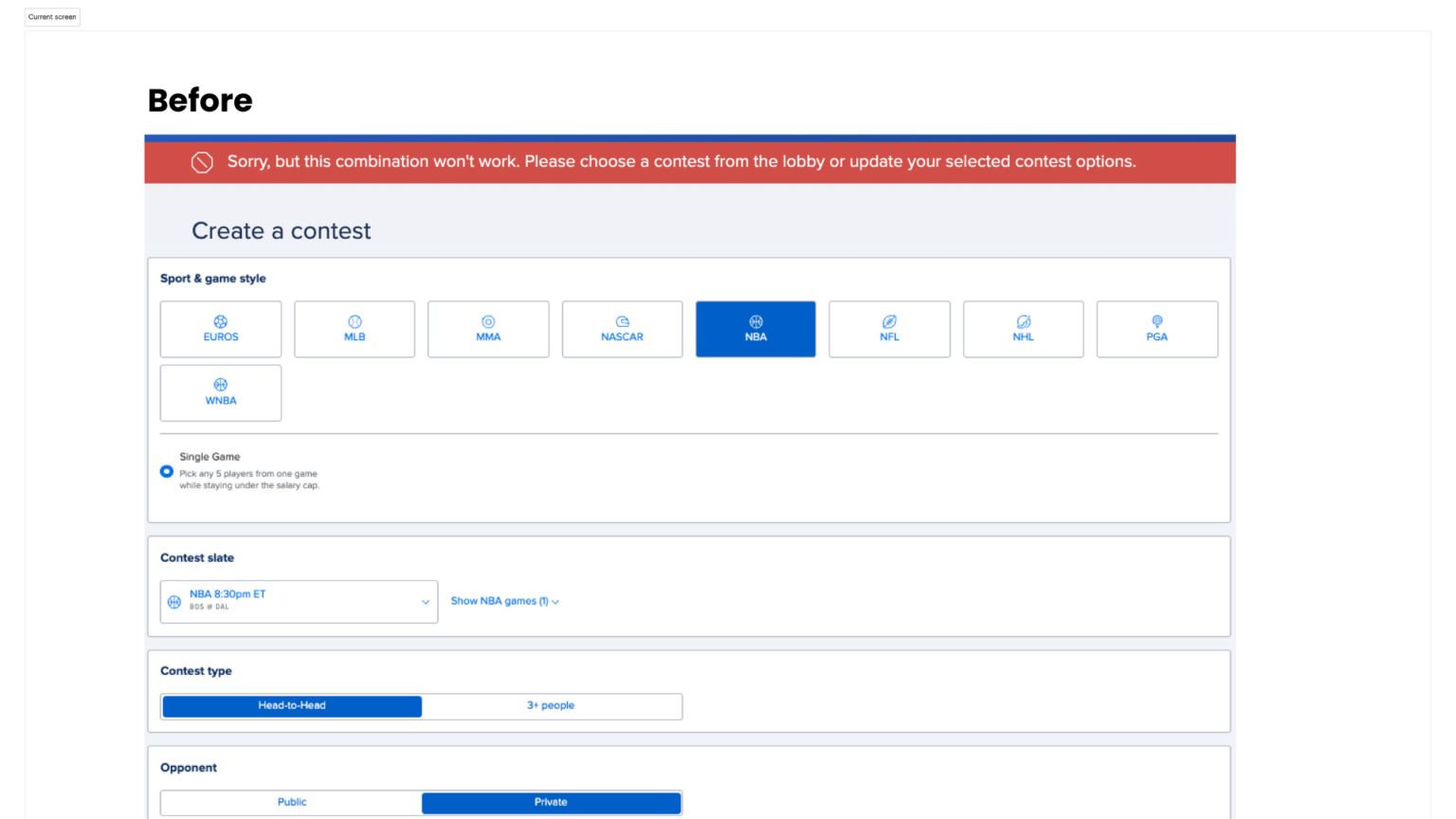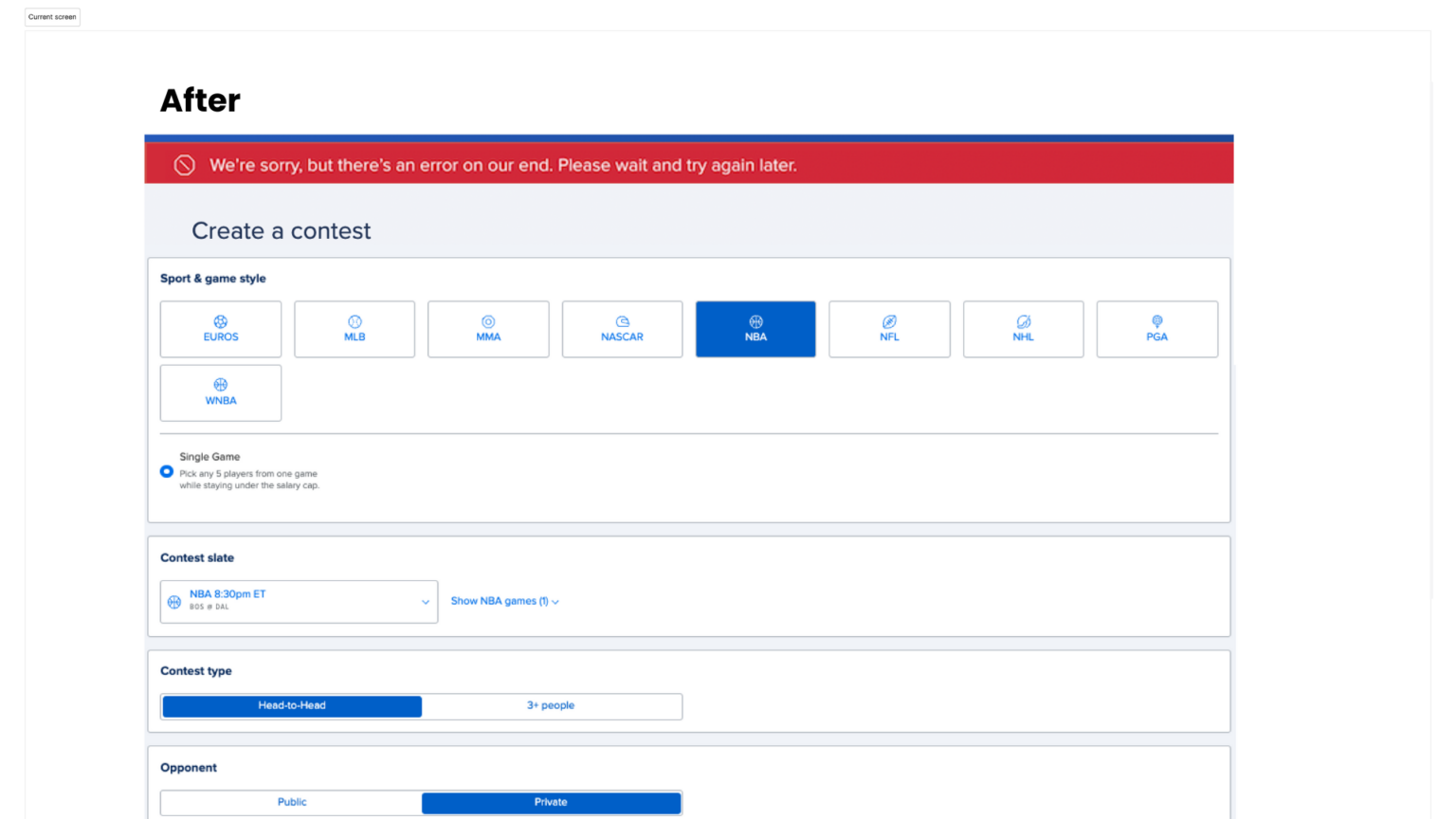Case Study 1: FanDuel Live Bet Tracker
The problem I solved:
Bettors were disengaging during TV timeouts and commercial breaks, leading to early cashouts and lower engagement during live betting events.
Project focus: How to keep users connected to their bets during game downtime without friction.
How I knew it was a problem:
Research/data: Qualitative research (user interviews/behavioral observation) showed that bettors frequently check their phones during TV breaks. This behavior opened a window for deeper engagement through easier access to live bets.
The goal for the work:
Increase in-app engagement and reduce early cashouts by allowing users to quickly monitor their bets without needing to unlock their phones.
My role:
UX Writer / Content Designer
Specific contributions:
Collaborated with the design team to streamline the user flow and remove redundant steps.
Refined the interface copy to be concise, clear, and supportive of a quick-glance experience.
Wrote microcopy to explain beta limitations (only available for NFL, only one bet at a time) without discouraging users from trying the feature.
Helped frame the communication around the “beta” state to manage expectations while still promoting excitement.
The outcomes:
Simplified user experience that aligned with bettor behavior during downtime.
Clearer messaging that made the new feature more intuitive and inviting to users during the NFL season.
Learned how tight, intentional UX writing directly impacts user engagement with time-sensitive features like live betting.
Case Study 2: Error Banner Message for Contest Creation
The problem I solved:
Problem: 3+ million Daily Fantasy users were blocked from creating contests due to a backend error. The original error message was inaccurate and risked confusing or frustrating users.
How I knew it was a problem:
Research/data: Engineering confirmed it was a backend issue, not a user action issue. The existing error message misattributed the failure to users’ selections, potentially eroding trust.
The goal for the work:
Goal: Quickly reassure users that the problem was on our side — not theirs — and keep them feeling confident in the app while engineering developed a fix.
My role:
Role: UX Writer / Content Designer
Specific contributions:
Received a direct request from engineering to assist with messaging.
Drafted five friendly, transparent error messages within a tight turnaround (2 days).
Collaborated with engineering to select the best message that balanced technical accuracy with user reassurance.
The outcomes:
Results:
Delivered a user-centered interim solution that maintained user trust during downtime.
Engineering selected one of my drafted options for immediate deployment.
Learned how rapid collaboration and empathetic messaging can help mitigate user frustration during technical incidents.


Case Study 3: Shuffle 5 Free-to-Play Game Copy Revision
The problem I solved:
Problem: A third-party developed game (Shuffle 5) had unclear, confusing in-game text and instructions, making it difficult for users to understand gameplay.
How I knew it was a problem:
Research/data: Reviewed the vendor’s original user flow and identified inconsistencies and points where user goals were unclear. Aligned with design to validate these friction points.
The goal for the work:
Goal: Clarify the game’s rules and flow to help users quickly understand how to play, improving usability and enjoyment.
My role:
Role: UX Writer / Content Designer
Specific contributions:
Worked with a Design Product Manager and Designer to understand user and product goals.
Audited the existing user flow created by the vendor.
Rewrote and simplified in-game instructions and screens to align with best UX writing practices.
My outcomes:
Results:
Delivered clear, concise, player-friendly copy that better supported gameplay.
Strengthened collaboration between internal teams and third-party vendors.
Reinforced the importance of tailoring copy to both business goals and user understanding in gaming environments.